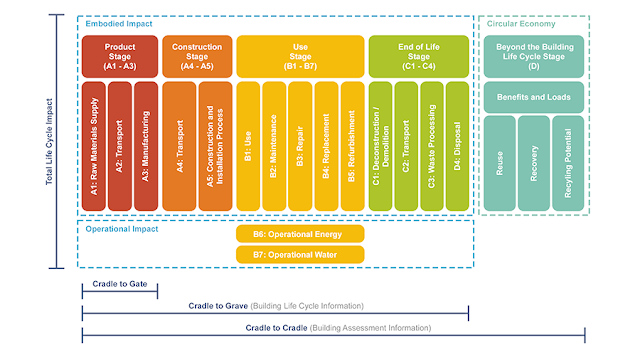Over a tenth of global CO₂ emissions come from building materials
Research suggests that buildings are responsible for about 39 percent of global CO₂ emissions.
A breakdown of this figure reveals that 28 percent of global CO₂ emissions can be attributed to building operations - commonly referred to as operational carbon; while the remaining 11 percent comes from building materials and construction—which is known as embodied carbon.
We must track and reduce embodied carbon in buildings
Recognizing that operational carbon is just one piece of the climate action puzzle, when the American Institute of Architects (AIA) recently relaunched the 2030 Design Data Exchange (DDx)—a free online platform for design firms pursing the 2030 Commitment to tracks and improve upon the energy performance of their entire portfolio—a key new feature was the capability to track embodied carbon.
Unlike operational carbon, which can be reduced throughout a building’s lifetime, embodied carbon is locked in as soon as a building is constructed. As such, tracking embodied carbon is critical.
Scope and LCA stages make a big difference
When it comes to tracking embodied carbon, it is important to be mindful of the scope and life cycle assessment (LCA) "stages" included.
With regard to tracking embodied carbon in the DDx, a team will need to identify which of the following apply to the scope of their assessment:
- Substructure
- Superstructure
- Enclosure
- Interiors
- Others
The scope can make a huge difference in the total embodied carbon figures. A new multi-story commercial building is going to be responsible for much more embodied carbon than a renovation project of the same magnitude.
With regard to LCA stages, most programs that calculate embodied carbon will assess and present information in accordance with standard EN 15978. Moreover, the revamped DDx asks users to clarify which EN 15978 stages were included in embodied carbon figures being offered for a project.
Standard EN 15978 defines the various stages of a building's life cycle
Standard EN 15978:2011: Sustainability of construction works - Assessment of environmental performance of buildings - Calculation method was developed by the European Committee for Standardization (CEN). This document defines a calculation method, based on LCA and other quantified environmental information, to assess the environmental performance of a building.
EN 15978 also specifies the protocol for reporting and communicating the outcome of the environmental performance assessment. The scope of EN 15978 covers all stages of a building's life cycle and is based on data obtained from a variety of information resources. The assessment includes all building related construction products, processes and services used over the life of the structure.
The figure below clarifies the various LCA stages of a building in accordance with EN 15978. Note that the standard includes both embodied and operational impacts as it includes operational energy (B6) and operational water (B7). Moreover, stage "D" goes beyond the typical "cradle to grave" life cycle of a building. Such is why identifying applicable LCA stages is critically important when qualifying and comparing embodied carbon and other LCA-related environmental impacts from buildings.
|
Figure 1: Building life cycle, adapted from EN 15978:2011. |
Do not forget about biogenic carbon
Biogenic carbon is the emissions related to the natural carbon cycle, as well as those resulting from the combustion, harvest, digestion, fermentation, decomposition or processing of biologically based materials.
Do not assume that the LCA program utilized to calculate embodied carbon for a building project considers biogenic carbon by default. If biogenic carbon was included this should be clarified when reporting embodied carbon data in the DDx or otherwise.



Recent Comments
These are actually very helpful tips. It is...
This is the most beneficial blog for all...
This blog is a great resource for anyone...
Thank you for sharing this important information. I...
This is a very interesting subject of the...